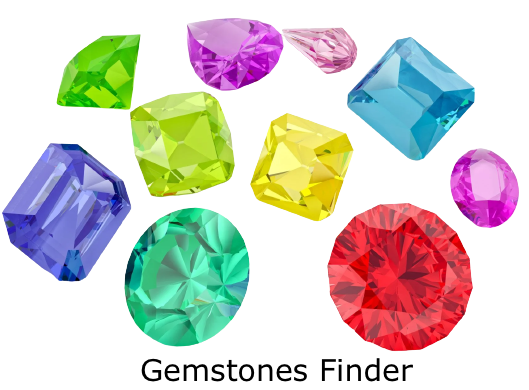The hardness of a gem is very important, and here, we’ll go over the exact ways to determine it, and how the Mohs Hardness Scales help with this.
What the Mohs Hardness Scale Is
This is a scale to determine a gem’s hardness and was created by the mineralogist and geologist from Austria named Friedrich Mohs, who created different hardness comparisons of each gem against the other.
At the top, we’ve got diamond, then corundum, and then topaz around 8. Drill bits are around 8.5. Quartz and feldspar are in the 7 and 6 positions, with a steel knife being 6.5 and a glass knife being around 5.5. then, we’ve got apatite, fluorite, and calcite under that, with a copper coin in the middle at 3.5. finally, you’ve got calcite, your fingernails, and gypsum near the bottom at around 2 on this scale.

This is something that’s used in gem studies, and it determines the durability of these gems. It can also tie into the beauty of a gem. Many times, if a gem isn’t beautiful and durable, it may not be worth it. When a gem is beautiful, many times, they also look for it to last one’s entire life, or even longer, which is why it’s important to make sure that you know this.
The purpose of the hardness scale is to determine the ability of the material to resist abrasion, along with scratching.
History of Hardness
For over two millennia, there’s been some kind of understanding of the hardness, and how they relate to one another. We find this in Pliny’s studies, where he did a writing about the different mineral classification based on different properties that occurred naturally. This was done in 77 AD in his “Natural History” text.
Then, 300 years prior to Pliny, there was Theophrastus, who was Aristotle’s student and also was a botany specialist, who wrote Peri Litton, which is a book about rocks, that tells you all about minerals and gems.
He took a more practical approach to both minerals and rocks. Before this, minerals were considered almost magical, mythical of sorts, and there were different societies that attributed nature to them. From this, Theophrastus did note that these attributes were actually something to still be considered.
The notes as well on the luster, heft, hardness, transparency and texture were something that helped shape up the Moh’s hardness scale.
What the Mohs Scale Tells Us
The gemstone’s hardness is not only good for telling us what the stone is, but also good for considering different purchases.
There are certain pieces of jewelry that do wear over a period of time. Earrings and necklaces for instance don’t come with the same bashes and bumps that rings deal with.

Some items may also be worn for a long period of time, or even during one’s lifetime, such as wedding rings.
You should make sure that you determine the hardness of a gem to figure out the durability, so that a person can enjoy these over a long period of time, even their lifetime.
There are other factors though that you should consider besides the Moh’s scale. There is a directional hardness, and this is something that does vary based on the direction. In these ways that crystals grow, it’s something that determines bonds and elements, and they’re stronger in different directions, especially in terms of the growth of crystals.
For instance, kyanite is very extreme in terms of its hardness in direction, being 4.5 in one of the directions, and then 7 in another direction which is quite a major difference.


0 comments